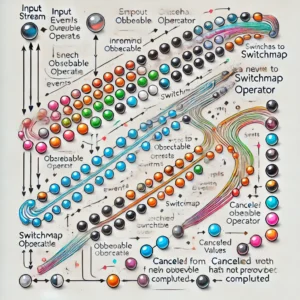Mastering GitHub Actions is essential for enhancing repository automation. GitHub Actions is a powerful tool that allows developers to automate their workflows and build custom workflows for anything from triggering an alarm to orchestrating complex security test automations. It brings platform-native automation and CI/CD capabilities directly into the GitHub flow to simplify the developer experience.
With GitHub Actions, developers can automate PR reviews, set up a CI/CD pipeline, and save time by automating their app’s building process. GitHub Actions are tasks that run in the cloud and offer easy-to-use CI/CD capabilities built by developers for developers. Compared with other automation or CI/CD tools, GitHub Actions offers native capabilities right in your GitHub flow.
In this article, I will show you how to master GitHub Actions for enhanced repository automation. I will provide you with step-by-step instructions on how to set up GitHub Actions, automate PR reviews, and deploy your application with GitHub Actions and Pages. With this knowledge, you will be able to streamline development across globally dispersed teams, centralize your expansive codebase, and ensure robust security measures in handling sensitive data. If you want to learn more about CI/CD, you can find my other article here: CI/CD in Software Development: Streamlining Your Workflow.
Importance of Automation in Software Development
As a software developer, I understand that automation is a crucial part of the development process. It allows us to streamline repetitive tasks, reduce errors, and ultimately save time and resources. Automation also enables us to focus on more complex and creative tasks that require human intervention.
One of the most significant benefits of automation is its ability to improve the quality of our code. By automating tasks such as testing and code review, we can catch errors and bugs early in the development process, which ultimately leads to more stable and reliable software.
Another advantage of automation is its ability to enhance collaboration and communication among team members. With automated workflows, team members can easily see the status of tasks, track progress, and communicate with each other in real-time. This ensures that everyone is on the same page and working towards the same goals.
In addition to improving code quality and collaboration, automation also enables us to deploy software more quickly and efficiently. With automated deployment pipelines, we can release new features and updates to our software with minimal downtime and disruption to our users.
Overall, automation is an essential tool for software developers that can help us to work smarter, not harder. By automating repetitive tasks, improving code quality, enhancing collaboration, and streamlining deployment, we can focus on what really matters: building great software.
Understanding GitHub Actions
What are GitHub Actions
GitHub Actions is a platform for continuous integration and continuous delivery (CI/CD) that allows developers to automate their build, test, and deployment pipeline. It was launched in 2018 as a platform-native automation tool and has since evolved to give developers powerful automation and CI/CD capabilities right next to their code in GitHub.
With GitHub Actions, developers can create workflows that build and test every pull request to their repository, or deploy merged pull requests to production. Workflows are made up of one or more jobs, which can run sequentially or in parallel. Each job can consist of one or more steps, which are individual tasks that perform a specific action, such as running a script or executing a command.
Types of Workflows Supported by GitHub Actions
GitHub Actions supports various types of workflows, including:
- Continuous Integration (CI) – automatically builds and tests code changes whenever a new commit is pushed to the repository.
- Continuous Deployment (CD) – automatically deploys code changes to a staging or production environment whenever a new commit is merged into the main branch.
- Scheduled Jobs – runs workflows on a schedule, such as nightly backups or weekly reports.
- Manual Triggers – allows developers to manually trigger a workflow, such as a deployment to production.
Benefits of GitHub Actions
GitHub Actions offers several benefits to developers, including:
- Seamless Integration – GitHub Actions integrates seamlessly with GitHub, making it easy to automate your workflows right in your repository.
- Customizable Workflows – GitHub Actions allows you to customize your workflows to meet your specific needs, including using third-party actions or creating your own.
- Reusable Actions – GitHub Actions allows you to discover, create, and share actions to perform any job you’d like, including CI/CD, and combine actions in a completely customized workflow.
- Cost-Effective – GitHub Actions is free for public repositories and offers a generous amount of free minutes for private repositories. Additional minutes can be purchased as needed.
Overall, GitHub Actions is a powerful platform for automating your repository workflows and can save you time and effort by streamlining your development process.
Setting Up GitHub Actions
Creating a GitHub Account
The first step to setting up GitHub Actions is to create a GitHub account. If you already have one, you can skip this step. To create an account, go to the GitHub website and click on the “Sign up” button in the top right corner. You will be prompted to enter your email address, choose a username and password, and verify your email address. Once you have completed these steps, your account will be created.
Setting Up a Repository
After you have created a GitHub account, the next step is to set up a repository. A repository is a place where you can store and manage your code. To create a repository, follow these steps:
- Log in to your GitHub account.
- Click on the “+” sign in the top right corner and select “New repository”.
- Give your repository a name and a description.
- Choose whether you want your repository to be public or private.
- Click on the “Create repository” button.
Once you have created your repository, you can start adding files and code to it. GitHub Actions can be added to any repository, so you can use an existing repository or create a new one specifically for your automation needs.
That’s it for setting up your GitHub account and repository. In the next section, we will go over how to create a GitHub Actions workflow to automate your repository.
Mastering Basic GitHub Actions
Creating Your First Action
To get started with GitHub Actions, the first thing you need to do is create your first action. This can be done by creating a YAML file in the .github/workflows directory of your repository. The YAML file defines the workflow that will be executed when a trigger event occurs.
The YAML file should include the following information:
- The name of the workflow
- The trigger event that will start the workflow
- The jobs that will be executed as part of the workflow
Here is an example of a basic YAML file:
name: My First Workflow
on: [push]
jobs:
build:
runs-on: ubuntu-latest
steps:
- name: Checkout code
uses: actions/checkout@v2
- name: Build code
run: |
npm install
npm run build
In this example, the workflow is triggered by a push event. The workflow has one job named “build” that runs on an Ubuntu machine. The job includes two steps: checking out the code and building the code using npm.
Testing Your Action
Once you have created your first action, it’s important to test it to make sure it works as expected. GitHub Actions provides a number of tools for testing your actions, including the Actions Toolkit and the GitHub Actions Local Runner.
The Actions Toolkit is a set of JavaScript modules that can be used to write and test GitHub Actions. The toolkit includes modules for working with the GitHub API, running shell commands, and more.
The GitHub Actions Local Runner is a command-line tool that allows you to run your actions locally and test them before committing them to your repository. The Local Runner provides a complete environment for running GitHub Actions, including support for Docker containers and virtual machines.
By testing your actions, you can ensure that they work as expected and catch any errors or issues before they are deployed to your production environment.
In summary, creating and testing your first action is an important step in mastering GitHub Actions. By following best practices and using the available tools, you can create reliable and effective workflows that automate your repository and streamline your development process.
Advanced GitHub Actions
As you become more comfortable with GitHub Actions, you can start exploring advanced features that can enhance your repository automation. In this section, I will cover some of these features and how you can use them to customize your workflows.
Using Environment Variables
Environment variables are a powerful way to pass data between steps in your workflow. You can use them to store sensitive information, such as API keys or login credentials, and access them securely in your workflow. To use environment variables in your workflow, you can define them in your workflow file or set them as secrets in your repository settings.
Working with Secrets
Secrets are encrypted environment variables that you can use to store sensitive information, such as passwords or access tokens. You can use secrets in your workflow to authenticate with external services or to access private resources. To use secrets in your workflow, you need to define them in your repository settings and reference them in your workflow file.
Managing Secrets and Access Control
When working with secrets, it’s important to manage them carefully to prevent unauthorized access. You can use GitHub’s access control features to restrict who can view or modify your secrets. You can also revoke access to secrets if they are compromised or no longer needed.
Limit Workflow Permissions and Access
GitHub Actions allows you to limit the permissions and access of your workflows to ensure that they only run when and where you want them to. You can use the on keyword in your workflow file to specify the events that trigger your workflow, and you can use the if keyword to specify the conditions under which your workflow runs.
Security Considerations When Using GitHub Actions
When using GitHub Actions, it’s important to follow security best practices to protect your code and data. You should avoid storing sensitive information in plain text in your workflow file and use secrets instead. You should also limit the permissions and access of your workflows to prevent unauthorized access.
Overall, GitHub Actions provides a powerful platform for repository automation and CI/CD. By using advanced features such as environment variables, secrets, access control, and workflow permissions, you can customize your workflows to meet your specific needs while maintaining security and reliability.
GitHub Actions for Repository Automation
As a developer, I have found GitHub Actions to be an incredibly useful tool for automating various tasks in my repository. With its flexible automation and easy-to-use CI/CD capabilities, GitHub Actions can help simplify workflows and accelerate application development. In this section, I will discuss some ways in which GitHub Actions can be used for repository automation.
Collaboration Among Team Members
GitHub Actions can help improve collaboration among team members by automating various tasks such as code reviews and notifications. By setting up workflows for pull requests, team members can be automatically notified when a pull request is opened, reviewed, or merged. This can help ensure that all team members are aware of changes to the codebase and can provide feedback in a timely manner.
Automating Code Checks
GitHub Actions can also be used to automate code checks such as linting, testing, and code coverage analysis. By setting up workflows for these tasks, developers can ensure that code is consistently checked for errors and that test coverage remains high. This can help improve the overall quality of the codebase and reduce the likelihood of bugs and errors.
Automating Deployment
GitHub Actions can also be used to automate deployment to various environments such as staging and production. By setting up workflows for deployment, developers can ensure that code is deployed in a consistent and reliable manner. This can help reduce the risk of deployment errors and ensure that new features are deployed quickly and efficiently.
Code Reviews and Notifications
GitHub Actions can also be used to automate code reviews and notifications. By setting up workflows for code reviews, developers can ensure that all changes to the codebase are reviewed before they are merged. This can help improve the overall quality of the codebase and reduce the likelihood of bugs and errors. Additionally, by setting up workflows for notifications, developers can be automatically notified when certain events occur such as a pull request being opened or a new issue being created.
Overall, GitHub Actions is a powerful tool for repository automation. By using workflows to automate various tasks, developers can improve collaboration among team members, automate code checks, automate deployment, and automate code reviews and notifications. With its flexibility and ease of use, GitHub Actions is a valuable addition to any developer’s toolkit.
Troubleshooting GitHub Actions
As with any tool, there may be issues that arise when using GitHub Actions. Here are some common issues that you may encounter and the solutions to fix them.
Common Issues
Self-hosted runners not working
If you are using self-hosted runners and they are not working, there are a few things you can check:
- Make sure the runner is online and connected to GitHub.
- Check that the runner has the necessary permissions to access the repository.
- Ensure that the runner has the correct version of the required software installed.
Actions failing unexpectedly
If your actions are failing unexpectedly, here are some things to check:
- Make sure that the input and output of each step are correct.
- Check that any required environment variables are set correctly.
- Ensure that any required secrets are set up correctly.
Slow action execution
If your actions are executing slowly, there are a few things you can do to speed them up:
- Use caching to speed up any repetitive tasks.
- Optimize your code to reduce the amount of time it takes to execute.
- Use a faster runner or upgrade your hardware.
Solutions and Fixes
Updating self-hosted runners
If you need to update your self-hosted runners, follow these steps:
- In the self-hosted runner application directory, edit the
.runnerand.credentialsfiles to replace all mentions of the old hostname with the new hostname. - Restart the self-hosted runner application.
Using caching
To use caching, add the following code to your workflow file:
- uses: actions/cache@v2
with:
path: |
~/.cache
~/.npm
key: ${{ runner.os }}-node-${{ hashFiles('**/package-lock.json') }}
restore-keys: |
${{ runner.os }}-node-
Optimizing code
To optimize your code, consider the following:
- Use parallelism to speed up tasks.
- Use smaller Docker images to reduce download times.
- Use pre-built images to speed up builds.
By following these troubleshooting tips, you can ensure that your GitHub Actions are running smoothly and efficiently.
Conclusion
In conclusion, mastering GitHub Actions can lead to enhanced repository automation and streamlined development workflows. With the advanced concepts and best practices discussed in this article, users can create highly flexible and powerful automation pipelines.
Some of the best GitHub Actions that can be used for automation include Checkout, which is commonly used for cloning repositories, and the actions/github-script, which can be used to automate events directly in the workflow YAML. Additionally, GitHub Actions is built on a few developer primitives, including their API and webhooks, which can be leveraged for automating PR reviews and other tasks.
Overall, GitHub Actions offers built-in automation and CI/CD capabilities that can greatly benefit developers. By understanding the advanced concepts and best practices discussed in this article, users can take full advantage of the platform and create efficient and effective automation pipelines.






